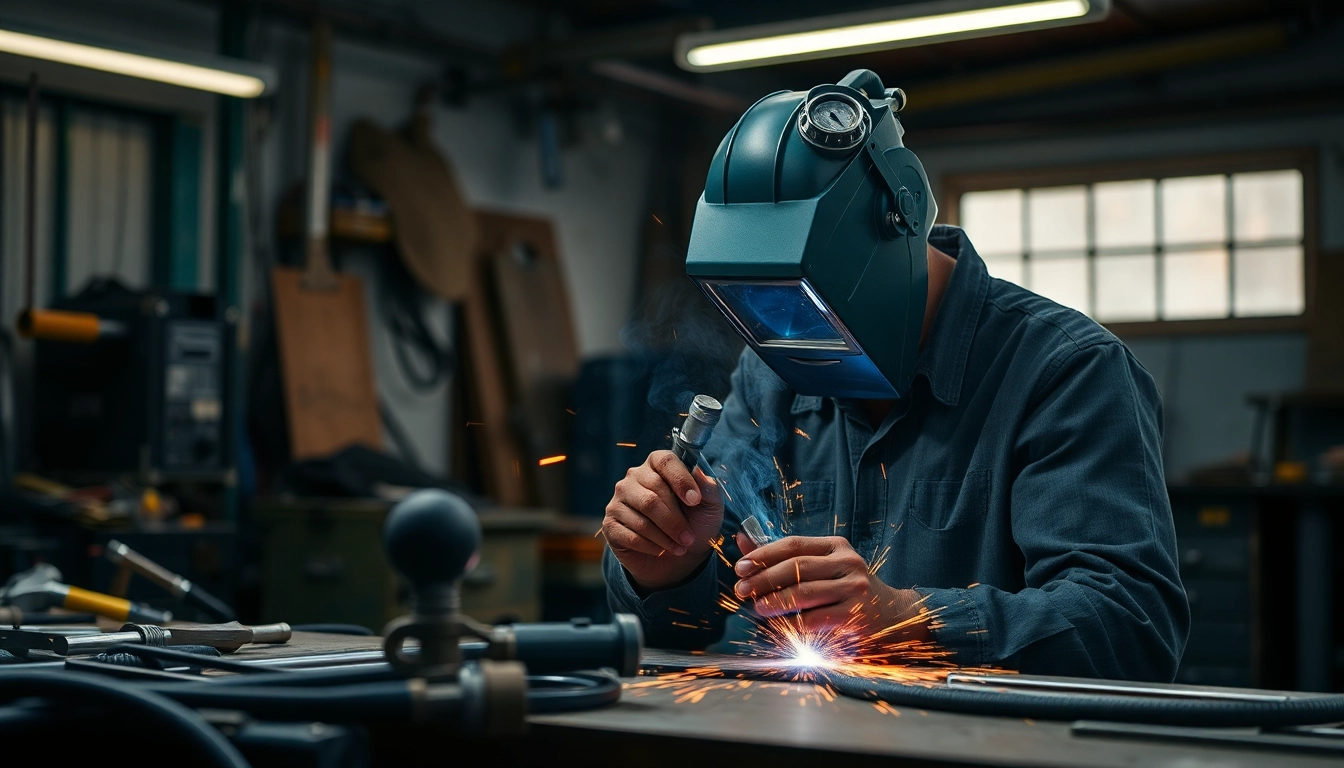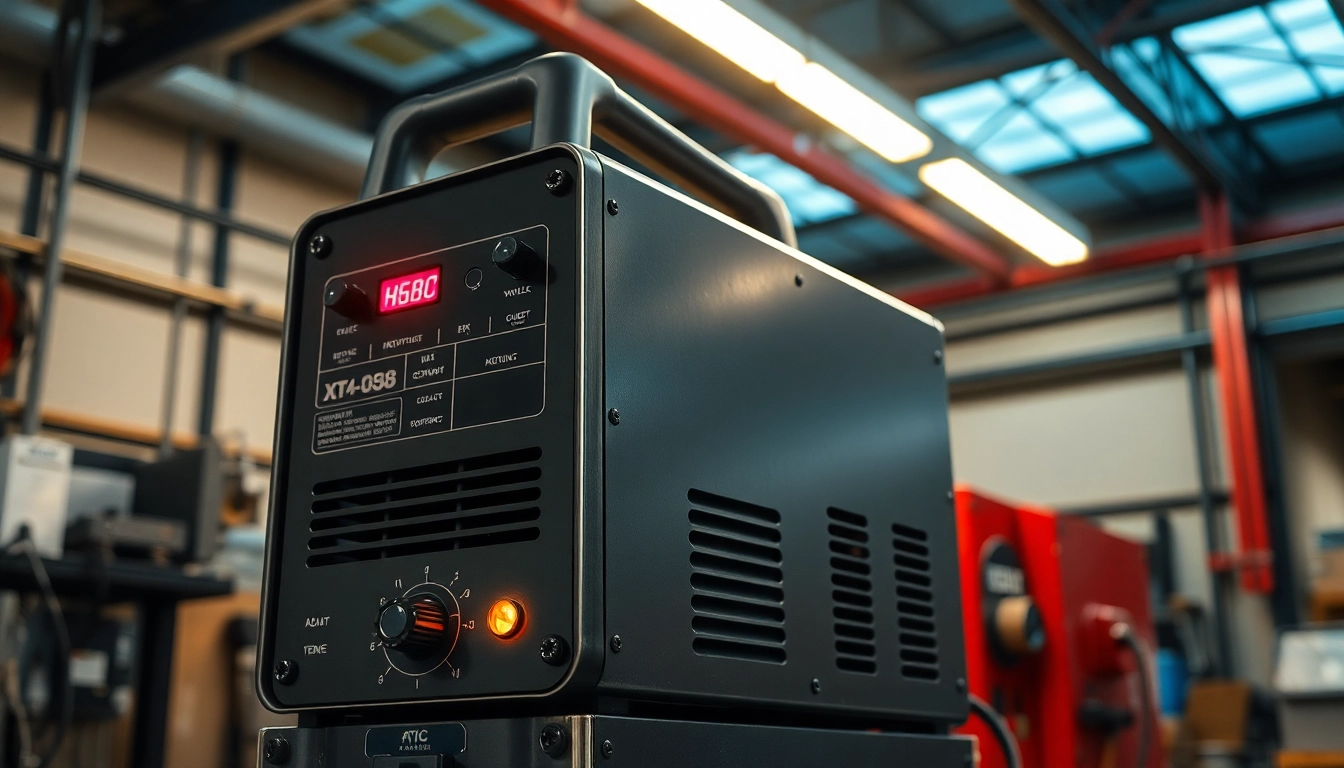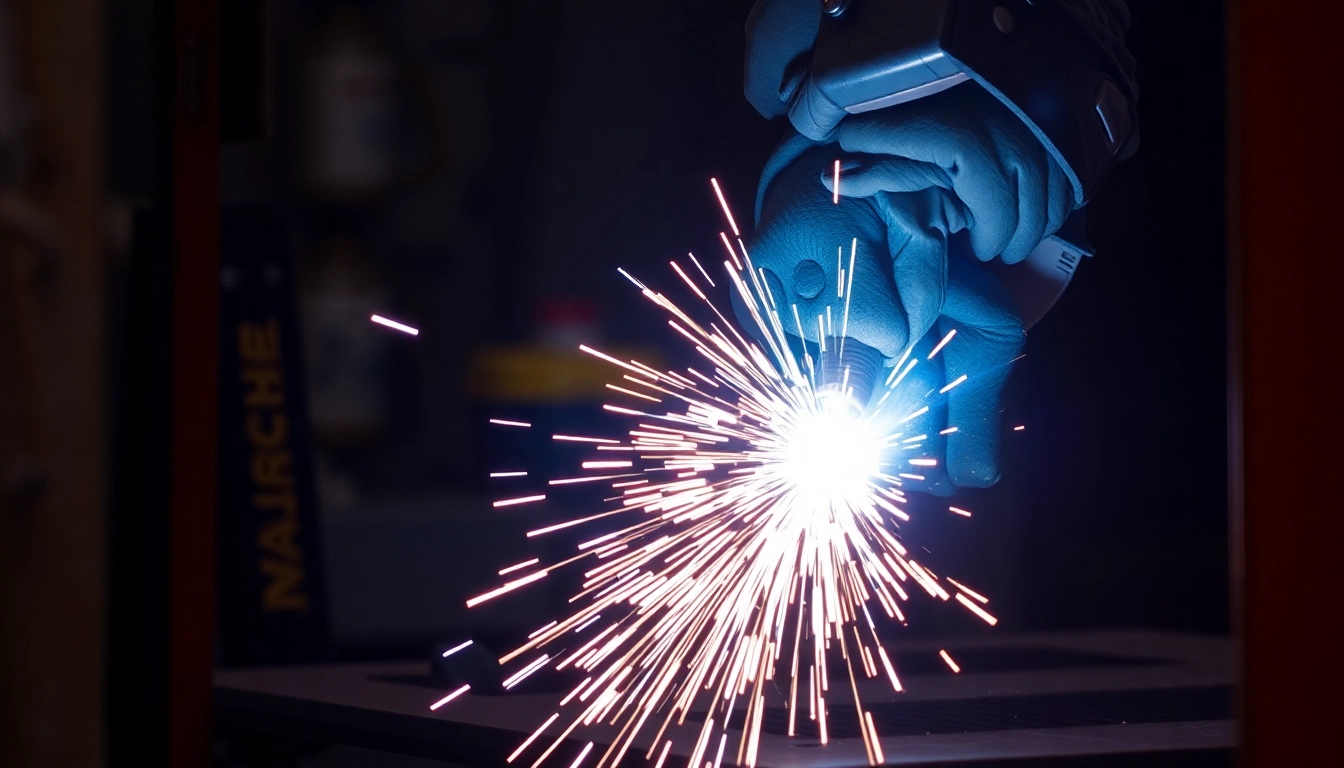Understanding AC DC TIG Welders
What is an AC DC TIG Welder?
An AC DC TIG welder is a versatile welding machine designed to operate using both alternating current (AC) and direct current (DC) for Tungsten Inert Gas (TIG) welding. This dual functionality means that these welders can effectively work with a wider array of metals and materials, from aluminum and magnesium to stainless steel and copper alloys. The ability to switch between AC and DC makes these welders ideal for various applications, whether working on artistic metal sculptures or heavy industrial equipment.
AC welding is especially effective for aluminum and magnesium, allowing welders to achieve clean, strong welds thanks to its ability to create an oxide-clearing effect during the weld process. On the other hand, DC welding provides a more stable arc and is preferred for welding more ferrous metals, producing strong, consistent welds without the same oxidation challenges faced in AC welding.
Key Features to Look For
When considering an ac dc tig welder, there are several key features to keep in mind that can significantly affect your welding performance:
- Power Output: The power output is typically measured in amps. A welder with a higher amp rating can weld thicker materials and provides a range of functionalities, enhancing its versatility.
- Duty Cycle: This refers to the amount of time the welder can operate within a given time frame without overheating. A higher duty cycle is crucial for longer welding sessions.
- Portability: Depending on your job, portability may be a vital feature. Some models are lightweight and easy to carry, while others are more robust and stationary.
- Control Features: Look for features such as adjustable current settings, foot pedals for ease of use, and digital displays for precise control over your welding parameters.
- Cooling Mechanisms: Advanced cooling systems can prolong the machine’s life and enhance performance during extended sessions.
Benefits of Using AC DC TIG Welders
AC DC TIG welders offer numerous advantages over other welding types, making them a preferred choice among professional welders:
- Versatility: The key benefit of an AC DC TIG welder is its dual functionality, permitting the welder to handle a broader range of materials. This is particularly advantageous for welding shops that handle various projects that require different materials.
- Precision: TIG welding is known for its precision, allowing for fine control over the welding process. This results in cleaner, more aesthetically pleasing welds.
- Minimal Smoke and Fumes: Compared to other welding processes, TIG welding generates fewer fumes. This results in a healthier work environment and reduces the need for extensive ventilation.
- Quality Welds: The quality of the welds produced with TIG welding is generally superior, with minimal spatter and excellent penetration, creating strong joints.
- Control over Heating: The ability to adjust the heat input allows for better control, making it easier to weld thinner materials without burning through.
How to Select the Right AC DC TIG Welder
Evaluating Your Welding Needs
Before making a purchase, it’s essential to evaluate your specific welding needs. Consider the types of materials you will be working with, the thickness of those materials, and the nature of the projects at hand. For example, if your primary focus is on aluminum, an AC capable unit is critical. Conversely, if you’re welding steel, a unit with robust DC capabilities will be necessary.
Additionally, think about the intended use of the welder. If it’s for hobbyist projects, a smaller and less powerful model might be sufficient, whereas professional settings may require a more robust machine equipped with a higher power output and advanced features.
Comparing Top Brands
Several brands have established a reputation for quality in the AC DC TIG welding market. When selecting a welder, consider comparing models from reputable brands such as:
- Miller Electric: Known for durable constructions and advanced features, Miller offers a range of welders that cater to both professionals and enthusiasts.
- Linde Welding: This brand provides user-friendly welders suited for various applications, boasting features that enhance both functionality and safety.
- Everlast: Often praised for cost-effectiveness, Everlast TIG welders come with solid features, making them suitable for beginners and experienced welders alike.
- ESAB: This brand focuses on innovation and durability, featuring advanced technology that can provide excellent user experiences.
- PrimeWeld: Known for providing high-quality welders at competitive prices, they offer an excellent range of products suitable for various welding application needs.
Budgeting for Your Purchase
The range of prices for AC DC TIG welders can vary widely depending on their specifications and capabilities. Beginner-friendly models can start as low as $300, while professional-grade machines can exceed $3000. It’s essential to create a budget that reflects your needs but also consider future growth.
If you plan to expand your welding projects or take on more substantial welds, investing in a higher-tier model could save you money in the long run. Additionally, always consider the costs associated with necessary accessories such as gases, tungsten rods, and safety gear.
Setting Up Your AC DC TIG Welder
Essential Equipment and Accessories
To achieve optimal performance from your AC DC TIG welder, several essential accessories and equipment are necessary:
- Tungsten Electrodes: Selecting the right tungsten is crucial for successful welding. Different alloys are used for different materials; for example, pure tungsten for aluminum and thoriated tungsten for steel.
- Filler Rods: The selection of your filler rods should match the base material being welded to ensure a strong joint. Options include aluminum filler rods for aluminum or ER70S-6 for mild steel.
- Gas Supplies: An argon gas supply is required for TIG welding to shield the weld from contaminants. Make sure to have a quality regulator and suitable gas cylinders.
- Helmet and Protective Gear: Personal protective equipment such as welding helmets, gloves, and aprons should meet safety standards to protect against UV rays and thermal hazards.
Installation Tips for Optimal Performance
Proper installation is crucial for the efficient operation of your AC DC TIG welder:
- Select a Level Surface: Ensure your welder is set up on a flat and stable surface to avoid any movement during use that can affect your welds.
- Ventilation is Key: Ensure your work area is well-ventilated, especially when using gas, to prevent harmful gas accumulation and ensure a safe working environment.
- Check Connections: Before powering on, inspect all connections and hoses to avoid leaks, ensuring a secure fit for your gas supply lines.
- Test Run: Conduct a test run with your welder to ensure everything operates smoothly and to adjust settings to suit your working materials.
Understanding Power Settings
One of the advantages of AC DC TIG welders is the ability to adjust power settings for different materials and thicknesses:
- Voltage Settings: Choose a voltage setting that matches your materials. Lower settings are typically better for thinner materials, while thicker materials may require a higher voltage.
- Amperage Control: Adjust your amperage based on the weld’s thickness. More current will produce a deeper weld, while lower current will provide a finer finish.
Monitoring these settings can lead to more consistent results, reducing defects and improving the quality of the weld.
Common Problems and Solutions with AC DC TIG Welders
Troubleshooting Common Issues
While AC DC TIG welders are powerful tools, users may encounter common issues that can affect performance:
- Inconsistent Arc: If you are experiencing an inconsistent arc, it may be due to incorrect tungsten preparation, improper gas flow, or worn-out consumables. Ensure your tungsten is sharpened correctly and inspect all equipment regularly.
- Excessive Spatter: This can often be a result of too high amperage settings. Reducing the current can help to minimize spatter and produce cleaner welds.
- Overheating: If your welder is overheating, check if the duty cycle is being exceeded or if the cooling system is functioning properly.
- Poor Penetration: Poor penetration can result from insufficient heat. Adjust the amperage settings accordingly or adjust your travel speed to ensure adequate penetration.
Maintenance Tips for Longevity
Regular maintenance will ensure that your AC DC TIG welder remains in top shape. Here are a few maintenance tips:
- Regularly inspect and clean the gas lines and torch head to prevent blockages.
- Keenly check and replace worn-out consumables to maintain optimal performance and quality.
- Keep the machine free of dirt and debris, which can interfere with operations.
- Store the welder in a dry area to prevent any moisture from infiltrating components.
When to Seek Professional Help
If your problems persist despite regular maintenance and troubleshooting, it may be time to seek professional help. Indicators that assistance is needed include:
- Smoking or unusual noises from the welder, which may indicate internal failures.
- Repeated operational failures after troubleshooting attempts.
- Issues with power connection and supply problems.
Advanced Techniques for Using AC DC TIG Welders
Techniques for Welding Aluminum and Stainless Steel
While the fundamentals of TIG welding remain the same, techniques can vary significantly depending on the material. Here are some advanced techniques for welding aluminum and stainless steel:
- Welding Aluminum: When welding aluminum, it’s essential to choose the right filler alloy and use a high-frequency start to create and maintain an arc. Additionally, cleaning the surface of the aluminum is vital as even minimal oxidation can compromise weld quality.
- Welding Stainless Steel: Stainless steel demands a specific approach to avoid contamination. Using a mixture of Argon and Helium for shielding can enhance arc stability and heat control. Moreover, ensure that your tungsten is not too large to enable focused heat input.
Adjusting Settings for Different Materials
Knowing how to adjust your settings based on the materials being welded can influence the final outcome significantly:
- Increase amperage for thicker sections and use slower travel speeds for better penetration. Conversely, use lower settings and faster travel speeds for thinner sections.
- For aluminum, oscillation may be beneficial to achieve a wide weld pool, while for stainless steel, focus on maintaining a narrow plume of weld to avoid excess heat input.
Best Practices for Achieving Quality Welds
Employing a few best practices will help you achieve dependable, high-quality welds every time:
- Practice effective torch angles. A 15-degree angle can be ideal for most locations.
- Maintain a consistent travel speed to ensure even weld depth.
- Prioritizing quality cleanup of parent materials is crucial to obtaining strong welds.
- Use the appropriate shielding gas and ensure proper flow rates.



